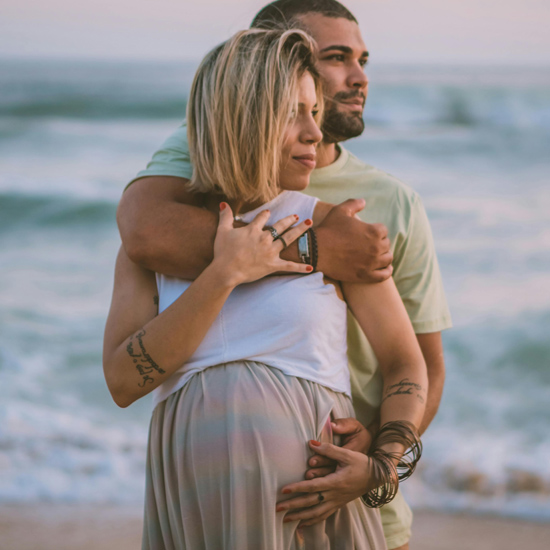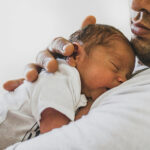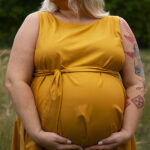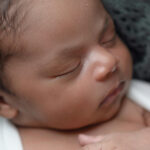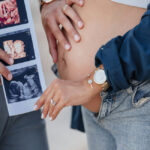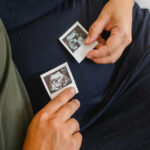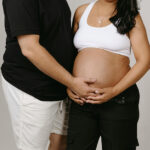A Journey from Pain to Parenthood Through Laparoscopic Management of Endometriosis
A 32-year-old woman (Mrs. A) and her partner (Mr. J), both healthy and in their early 30s, presented to our clinic with a history of delayed conception and pelvic pain. They had been trying to conceive for nearly two years without success. Mrs. A also reported painful periods (dysmenorrhea), pain with intercourse (dyspareunia), and occasional bowel discomfort during menstruation—classic symptoms suggestive of endometriosis.
Her partner’s semen analysis was normal, and ovulation tracking confirmed regular cycles. Her AMH levels were within a healthy range, and fallopian tube patency was presumed but not confirmed. Despite her age and normal fertility investigations, her persistent symptoms and unexplained infertility raised suspicion of moderate to severe endometriosis as the underlying barrier to conception.
Laparoscopic Diagnosis and Treatment: A Turning Point
Given her symptoms and infertility, we recommended diagnostic laparoscopy with a view to treat any endometriosis found. The procedure was performed under general anaesthesia, and intraoperative findings confirmed moderate endometriosis (Stage III based on the revised American Society for Reproductive Medicine criteria). Endometriotic lesions were found on the uterosacral ligaments, posterior cul-de-sac, and both ovarian fossae. Adhesiolysis and excision of endometriotic tissue were performed meticulously to restore normal pelvic anatomy.
The decision to proceed with laparoscopy was based on strong evidence that surgical treatment of moderate to severe endometriosis improves spontaneous conception rates. It also alleviates pain symptoms and improves the quality of life – two major priorities for this patient.
First Conception After Surgery at Age 32
Within four months of the surgery, Mrs. A conceived naturally without assisted reproductive treatment. Her pregnancy progressed without complication, and she delivered a healthy baby at term. This success further supported the hypothesis that mechanical and inflammatory factors caused by endometriosis had previously been interfering with fertilisation and implantation.
Second Conception at Age 34 Following Reassessment and Repeat Laparoscopy
Two years after the birth of her first child, the couple returned with a desire to conceive again. Although her menstrual cycles had returned, she reported the recurrence of pelvic pain and increasing difficulty in conceiving. After counselling, a repeat laparoscopy was performed, revealing recurrent endometriosis, albeit less extensive than before. Surgical removal of recurrent lesions was again undertaken.
Following this second procedure, Mrs. A conceived spontaneously within two cycles, again without the need for IVF. She is currently pregnant and progressing well under shared antenatal care.
Understanding the Mechanism: How Surgery Facilitated Conception
The mechanism by which laparoscopic treatment of endometriosis improves fertility is multifaceted:
- Restoration of Pelvic Anatomy: Endometriosis can distort reproductive structures through adhesions. Surgery restores normal relationships between the ovaries, tubes, and uterus.
- Reduction in Inflammation: Endometriosis promotes a pro-inflammatory environment, which can impair fertilisation, embryo transport, and implantation.
- Improved Follicular Function: Removal of peritoneal and ovarian endometriosis may improve ovarian responsiveness and reduce local toxicity.
- Enhanced Tubal Mobility: Clearing peritubal adhesions enhances the ability of the fallopian tubes to capture the ovulated egg.
Final Reflections
This case is a strong reminder that laparoscopic excision of endometriosis can be a pivotal intervention, even in women with otherwise unexplained infertility. In Mrs. A’s case, it enabled two natural conceptions and significantly relieved her pain symptoms. Her story is a powerful testament to the importance of investigating and addressing endometriosis early in the fertility journey.
We wish Mrs. A and Mr. J continued joy and health as they prepare to welcome their second child.

